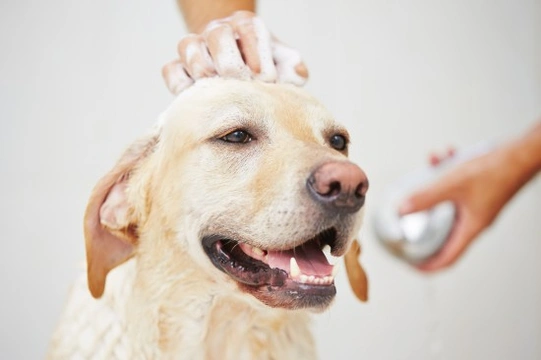
How to deal with dandruff in the dog
Dandruff is often associated only with people, but it is a condition that our canine companions can also suffer from, and just as with the human condition of dandruff, it can have many potential causes. Not only can canine dandruff show up clearly on the coat of the dog, particularly in the case of dogs with dark fur, but it can also shed in great quantities throughout the home, and get on your own clothes and furniture too. It is not always possible to eradicate canine dandruff for good unless you can identify the underlying cause of the issue and correct it, but there are some ways to deal with dandruff and attacks of dry skin in the dog, and make it more manageable.
Read on to learn more about how to deal with dandruff in the dog.
Finding the cause of canine dandruff
While dandruff may be “just one of those things,” there are sometimes underlying causes or other conditions that can lead to dandruff in the dog. One of the more serious of these is canine Cushing’s disease, which may be the case if the dandruff is also accompanied by hair loss. Some dog breeds such as the Shar Pei are also particularly prone to skin conditions and discomfort, so dandruff can also be breed specific, but any breed or type of dog can theoretically be affected by condition, and at any age.
It is important to get your dog checked out by the vet if they appear to be suffering from dandruff, in order to try to ascertain if there is an underlying reason for it, and find out if there is anything that can be done to treat the condition.
Minimising dandruff
Depending on the reason behind your dog’s dandruff, making some simple changes to your usual dog care protocols may help. Dandruff and other dermatitis-related problems can potentially be caused by allergies, and so treating or removing the cause of the allergy will often help. It may not be possible to remove or even in some cases identify the allergenic trigger in your dog, but one of the most common culprits is the ingredients in some dog foods, which is one thing that you can address. Consider changing your dog over onto a grain-free food, or one that is specially designed for dogs with allergies or sensitive skin.
How to care for the skin and coat of a dog with dandruff
As well as getting veterinary advice and doing what you can at home to try to tackle or prevent your dog’s dandruff, you will also need to take steps at home to care for your dog’s skin and coat.
You should gently brush and groom your dog on a daily basis to evenly distribute the natural lubricating oils present within the coat throughout the coat and over the body, and to remove any obvious flakes of shed skin. Take care not to brush too hard, which can irritate areas of dry skin, and potentially prove uncomfortable for your dog.
Supplements
Consider adding some veterinary-approved supplements or vitamins to your dog’s diet to improve the general condition of their skin and coat, such as zinc, and vitamins A and E. You should always check with your vet before doing this or making any other changes to your dog’s diet, to ensure that they approve of how you are proceeding, and that the supplements will not interact with any other medications your dog might be taking.
Bathing
Bathing can help you to both remove shed skin and dandruff from the coat of your dog, and soothe any sore or irritated areas. Some dogs with dandruff may require bathing on a regular basis to help to treat the problem, but take care not to bathe them too frequently, as stripping the natural oils of the coat can potentially make the problem worse.
The choice of shampoo that you use to bathe a dog with dandruff is also important, and you can get special dog shampoos to help to treat dandruff in dogs, or naturally antiseptic shampoos such as tea tree products. Otherwise, use a very mild, soap-free baby shampoo, with a neutral pH.
After bathing, apply a conditioner, and be sure to rinse and dry your dog thoroughly.
The environment within the home
Very dry environments can contribute to or exacerbate canine dandruff, so if your dog’s dandruff is worse in the winter, consider if your use of heaters and radiators is leading to the air within the home being particularly dry. Think about using a humidifier or other means of creating a slightly more humid atmosphere within the home when the air is dry, and you might find that not only does this help to clear up your dog’s dandruff, but that it improves the suppleness and condition of your own skin as well!



